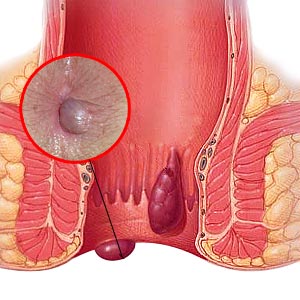Hemorrhoids, commonly known as piles, are one of the frequent problems faced by many people. How to know whether one is having piles or not? Is it dangerous or life threatening? Are you at risk?

What is hemorrhoid?
There are generally two types of hemorrhoid – internal or external.  Internal hemorrhoids are piles that are located above the dentate line in the anus, i.e. deeper inside the anus; external hemorrhoids are those that are located below the dentate line. To understand what is hemorrhoid, one first needs to have a little idea on the human anatomy of the anus.
In the human anus, everybody is born with what is called the anal cushions. These anal cushion located at the 3, 7 and 11 o’clock position – seeing from the point with the patient lying down facing up – are tissues which are responsible in sealing the anus in order to maintain continence of stools. Blood vessels supplying oxygen to the anus are located at these anal cushions and nearby them.
 When frequent straining during defecation occurs, in time, these blood vessels become engorged because much stress and pressure is applied to pass out stools through the anal passage. Hence, the anal cushion becomes swollen and with the engorged blood vessels, bleeding can occur when one passes motion. Then the anal cushion becomes what it is called hemorrhoid.
When frequent straining during defecation occurs, in time, these blood vessels become engorged because much stress and pressure is applied to pass out stools through the anal passage. Hence, the anal cushion becomes swollen and with the engorged blood vessels, bleeding can occur when one passes motion. Then the anal cushion becomes what it is called hemorrhoid.
Internal hemorrhoid can be further classified into degrees of prolapse out of the anal passage:
First degree       – No prolapsed
Second degree – Piles prolapse when passing motion but is reduced when defecation is completed
Third degree     – Piles prolapsed when passing motion but must be manually reduced into the anus
Fourth degree  – Piles are completely prolapsed and irreducible
How do I know if I have hemorrhoid?
Early stage of internal hemorrhoid often does not manifest any symptoms but external hemorrhoid does because its location below the dentate line is innervated by pain receptors like our skin. Usually patients will seek medical help when they experience signs and symptoms such as:
- Painless bleeding when passing motion
- Blood stained toilet paper when cleaning the anus after defecation
- Sensation of incomplete defecation, a.k.a tenesmus
- Lump felt near the anus

Bleeding during defecation is a common presentation of piles. However, it is also a type of manifestation in other more severe disease such as diverticulitis or colorectal cancer. Hence, do consult your physician as soon as possible when such problem arises.
What to expect when seeing a doctor?
Digital Rectal Examination
It is a common medical practice that when a patient presents with altered bowel habits, such as bleeding when passing motion, aside from checking the abdomen, the physician will also assess the anal canal by inserting his or her finger into the anus to feel for any abnormalities in the anal canal. This will help the doctor to have a clinical confirmation if pile is present in the patient or not.
Proctoscopy
A proctoscope is a hollow tube that helps the doctor to visualize the anal canal in order to locate the hemorrhoid by inserting the lubricated tube into the anal canal. If the doctor confirms the presence of the internal hemorrhoid through this procedure, and it is deemed uncomplicated, the doctor will proceed to treat the hemorrhoid immediately by ligating the hemorrhoid.
Sigmoidoscopy or colonoscopy
What can be done to cure hemorrhoids?
If the hemorrhoid is not bothering, i.e. causing discomfort or pain, it is not necessary to remove the pile. It is advised to increase fiber intake with plenty of water, or to reduce fiber intake if you have been taking too much in your diet. Fiber is not nutrient to the body; it is only needed to produce feces, so that the feces can be large enough to be passed out. If too much of fiber is taken, the feces will become too large to be expelled through the small lumen of the anal canal.
Rubber band ligation
This approached is used to treat internal hemorrhoids. The doctor uses a device to ligate the pile with specially designed rubber band. The pile will eventually “die†due to lack of blood supply and sloughs off by itself within 3 to 10 days time.
Stapled hemorrhoidectomy
Using a device that acts like a typical staple, the surgeon locates the piles and resects the excessive hemorrhoidal tissues and at the same time this procedure causes to block the blood supply to the problematic hemorrhoids. This is a minor surgical procedure that can be done in a day surgery centre. It is not associated with much pain and yields good recovery result.



